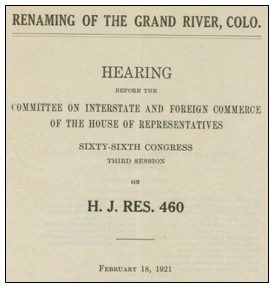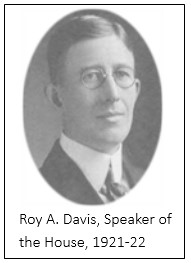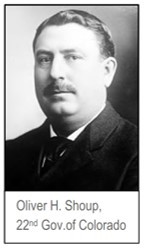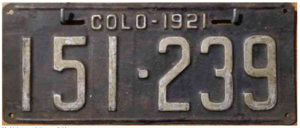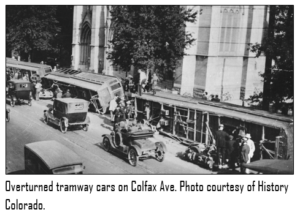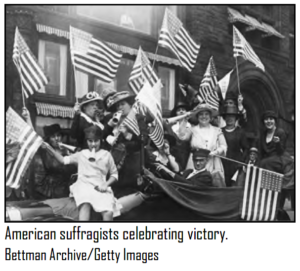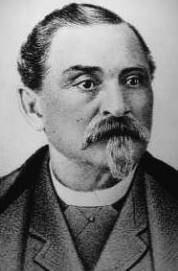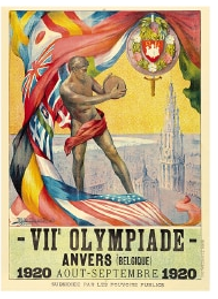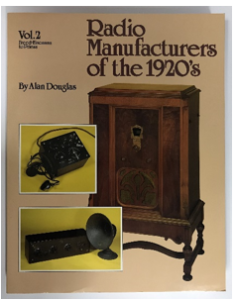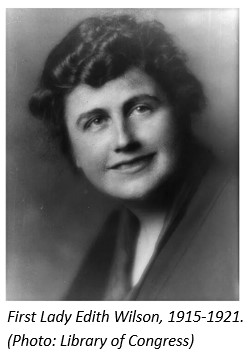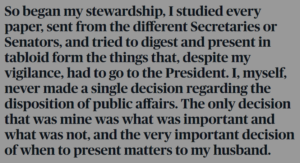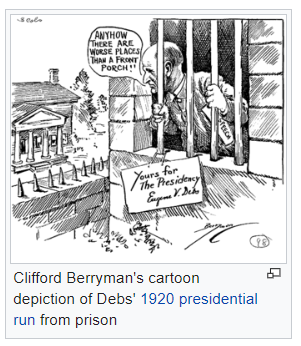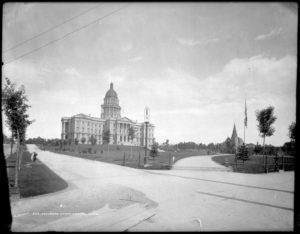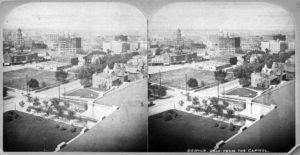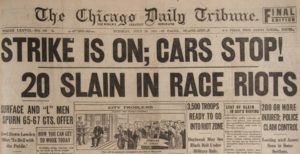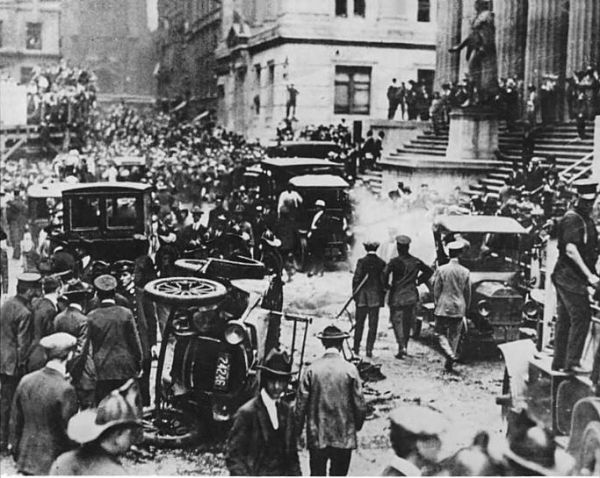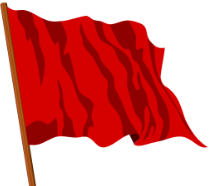by Patti Dahlberg
Colorado’s weather has set numerous records for highs, lows, and coldest months on record over the past year or so. Just two years ago, we experienced an unheard of “bomb cyclone” snowstorm, severely testing Coloradans’ ability to navigate gusting winds, at times up to 96 mph, creating blizzard conditions, and virtually shutting down all transportation in Denver. The bomb cyclone designation referred to the 30-degree drop in the barometric pressure that day, to 970.4. (Low barometric pressures are typically associated with Category 2 or 3 hurricanes.) It was a record day in Colorado for extreme weather, but 1921 also had its share of extreme weather records in Colorado and across the country.
Grays Harbor, Washington. The year started with the “Great Blowdown.” Around noon on January 29, 1921, the wind began hitting Grays Harbor, at that time considered the largest lumber shipyard in the world. By 2:00 p.m., the Olympic Peninsula felt the full force of an extreme 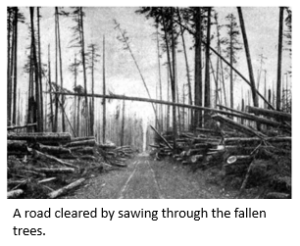 windstorm, considered by some a cyclone and by others a tornado. Hurricane-force winds raked the shores of the Pacific Northwest from central Oregon to the Canadian border. The storm came without warning, and within a few hours gusts were reaching an estimated 150 mph — estimated, because the instrument measuring the wind gusts was carried away after measuring 126 mph. The storm blew down timber in a 2,000-square-mile area, toppling more than 40 percent of the trees on the southwest side of the Olympic Mountains. Some of the trees blown over measured 12 feet in diameter, with top-heavy and shallow-rooted great spruces particularly vulnerable. Hundreds of farm and forest animals were killed by falling tree branches and flying debris, but amazingly, only one person was killed during the storm, although several were injured.
windstorm, considered by some a cyclone and by others a tornado. Hurricane-force winds raked the shores of the Pacific Northwest from central Oregon to the Canadian border. The storm came without warning, and within a few hours gusts were reaching an estimated 150 mph — estimated, because the instrument measuring the wind gusts was carried away after measuring 126 mph. The storm blew down timber in a 2,000-square-mile area, toppling more than 40 percent of the trees on the southwest side of the Olympic Mountains. Some of the trees blown over measured 12 feet in diameter, with top-heavy and shallow-rooted great spruces particularly vulnerable. Hundreds of farm and forest animals were killed by falling tree branches and flying debris, but amazingly, only one person was killed during the storm, although several were injured.
Silver Lake, Colorado. On April 14 and 15 of 1921, a major winter storm slammed the Front Range of Colorado’s Rocky Mountains, leaving more than 6 feet of snow in a 24-hour period. The 75.8 inches of measured snow that fell in a 24-hour period at Silver Lake in Boulder County remains the record for the most snowfall in a 24-hour period in the United States. Silver Lake’s snow totals continued to grow to 87 inches in 28 hours, and then 95 inches in 32 hours (that’s almost 8 feet of snow). Meanwhile, in Denver, only about 10 inches of snow fell, but the 50-mph winds accompanying the storm created snowdrifts throughout the city, some as high as 7 feet, and caused damage to trees, utility poles, and buildings.
Pueblo, Colorado. During a typical summer cloudburst, more than half an inch of rain may fall in a matter of minutes, and that is exactly what happened in Pueblo on June 3, 1921, this time creating devastating consequences for the city. Beginning the day before, torrential rains began swelling creeks and streams throughout the Arkansas River drainage system. Fountain Creek, running south from Colorado Springs, overflowed its banks, and mountain tributaries of the Arkansas River reached flood stage. Mountain reservoirs failed, and a cresting flood, over 15 feet deep at times, moved swiftly down the Arkansas River on the afternoon of June 3, sweeping through Pueblo’s business and commercial district that evening. Two thousand railcars were smashed, overturned, or carried away. Eight of the nine bridges across the Arkansas River and Fountain Creek were seriously damaged or washed away. Hundreds of buildings were lost, including more than 500 houses and almost 100 businesses. Fires raged in the upper floors of flooded structures as houses and boxcars floated down Pueblo’s South Union Avenue. Telephone lines were destroyed, so there was little to no communication between Pueblo and the rest of the state. There was no official rainfall report for Pueblo at the time, but records from private citizens indicated that a total of 6 inches or more fell between June 3 and June 5.
The 1921 Pueblo flood was the worst disaster in the history of Colorado. The floodplain covered more than 300 square miles, and the flood toll stood at 262 people dead, missing, or unaccounted for. The actual death toll was likely much higher because for several years, human remains were found many miles downstream. Much of the downtown area was destroyed, farmlands east and south of the Steel City were flooded, irrigation structures were wrecked, and Pueblo’s economy was dealt a long-lasting blow. Subsequent estimates of property damages and losses from the flood ranged from $13 to $19 million in a city whose assessed valuation in 1921 was just over $33 million. The 1921 flood was the worst of many floods on the Arkansas River, which averaged one flood every 10 years until the Pueblo Dam was completed in 1975.
Tampa Bay, Florida. On October 25, 1921, Tampa Bay suffered the most destructive hurricane to hit the area since 1848. A 10- to 12-foot storm surge destroyed substantial portions of the seawall along coastal locations. Many vessels were smashed against the docks by the waves, and area citrus crops were destroyed. Powerful winds brought heavy damage to structures along the bay. Without the weather forecasting support of the satellites, radar, computer graphics, and mathematical models we have today, advance warning for such an event was extremely difficult. Most hurricane “forecasting” at that time was based on data from previous hurricanes moving through the Gulf of Mexico, which normally landed far north of the Tampa area. There were eight confirmed fatalities, mostly from drowning.
 Outer space (yep – outer space). From May 13 to 16, 1921, one of the two largest known solar storms burst from the sun and soared across space to create some havoc on Earth. This 1921 solar storm, called the New York Railroad Storm because of the disruption to trains in New York City following a fire in a control tower on May 15, unfolded in two phases, unleashing an opening burst of disruption before intensifying into a full-fledged superstorm. In reconstructing the timeline of the storm from scientific journals, newspapers, and other sources, it is believed that three major fires erupted on the same day. One, sparked by strong currents in telegraph wires at a railroad station in Brewster, N.Y., burned the station to the ground. The second fire destroyed a telephone exchange in Karlstad, Sweden, while the third occurred in Ontario. Telegraph systems and telephone lines were disrupted in the U.K., New Zealand, Denmark, Japan, Brazil, and Canada. It wasn’t all bad news: many locations around the world recorded sightings of spectacular auroras. Auroras were recorded near Paris, in Arizona, and in Samoa, which is not far from the equator. It is widely believed that if the 1921 storm occurred today, there would be widespread interference with our modern technology systems and widespread disruption of services.
Outer space (yep – outer space). From May 13 to 16, 1921, one of the two largest known solar storms burst from the sun and soared across space to create some havoc on Earth. This 1921 solar storm, called the New York Railroad Storm because of the disruption to trains in New York City following a fire in a control tower on May 15, unfolded in two phases, unleashing an opening burst of disruption before intensifying into a full-fledged superstorm. In reconstructing the timeline of the storm from scientific journals, newspapers, and other sources, it is believed that three major fires erupted on the same day. One, sparked by strong currents in telegraph wires at a railroad station in Brewster, N.Y., burned the station to the ground. The second fire destroyed a telephone exchange in Karlstad, Sweden, while the third occurred in Ontario. Telegraph systems and telephone lines were disrupted in the U.K., New Zealand, Denmark, Japan, Brazil, and Canada. It wasn’t all bad news: many locations around the world recorded sightings of spectacular auroras. Auroras were recorded near Paris, in Arizona, and in Samoa, which is not far from the equator. It is widely believed that if the 1921 storm occurred today, there would be widespread interference with our modern technology systems and widespread disruption of services.
Resources:
- https://www.ncdc.noaa.gov/news/month-climate-history-june-3-1921-colorado-flooding
- https://coloradoencyclopedia.org/article/1921-pueblo-flood
- https://www.csbj.com/archives/incoming-tide-part-3-historic-floods-have-left-their-mark-on-area/article_15b8b01a-9e51-56f0-8579-1042e7001f4d.html
- https://climate.colostate.edu/pdfs/silver_lake_record.pdf
- https://www.weather.gov/media/tbw/1921/1921_hur_90th_anniversary.pdf
- https://www.scientificamerican.com/article/new-studies-warn-of-cataclysmic-solar-superstorms/
- https://www.historylink.org/File/5249
- https://www.fs.usda.gov/detail/olympic/learning/history-culture/?cid=FSEPRD493594







